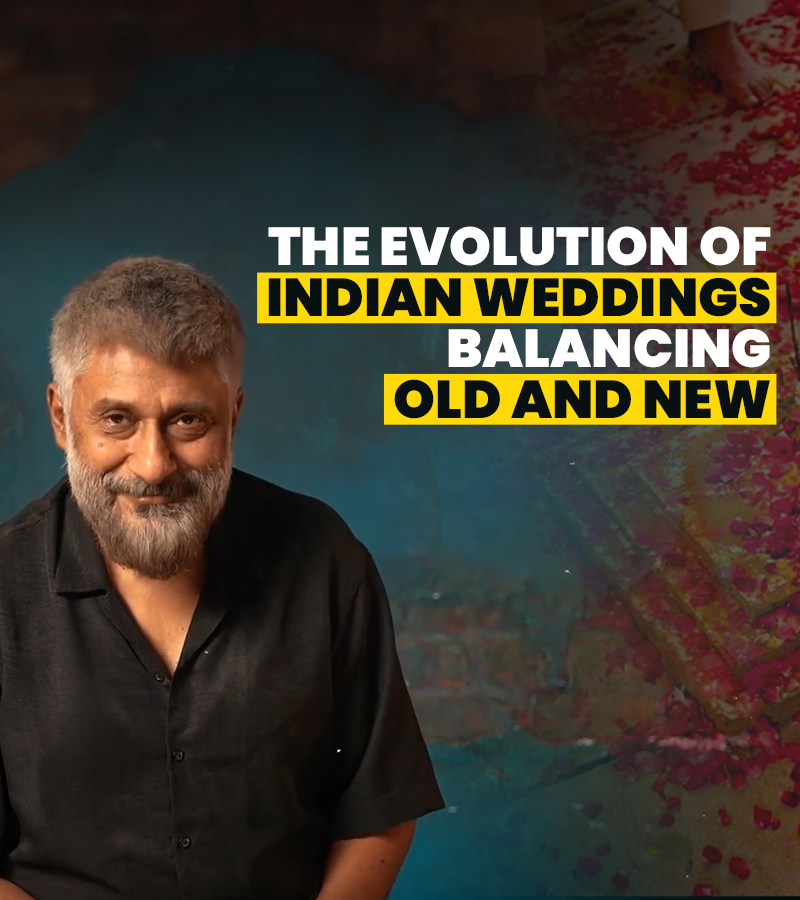

Balancing Tradition and Modernity in Indian Weddings: A Reflection of India’s Evolving Cultural Identity
Indian weddings today are a dance between tradition and modernity, reflecting the complex, evolving identity of a nation that values its roots while looking to the future.
Indian weddings have always been a celebration of tradition and cultural heritage. Today, they are a microscopic representation of a society changing at fast speed. As India strides forward, the weddings have become a representation of the tussle between tradition and modernity. It is way more than a trend; in fact, it reflects the change in India’s cultural identity.
The Evolution of Indian Weddings
What used to be a community-based affair has given way to something far more complex, replete with personal expression and imagination, often leading to cultural reinvention.
In his films, Vivek Ranjan Agnihotri often showcases that change is inevitable but one should never lose their cultural identity. In real life, a good example of such a balancing act would be Indian weddings which beautifully amalgamate tradition with modernity. They speak volumes on the strength of Indian culture where any alien influence, however strong it may have been, was first imbibed and thereafter adapted to its advantage without ever losing its core spirit.
The Traditional and the Modern in the Indian Wedding
With all the modernity thrown in, the basic tenets of Indian weddings remain traditional. It is the mehendi, sangeet, and saat phere around which a Hinduwedding gets knit at its core and bridges the vast gap from yesterday to today. These are not ceremonies for the sake of customs; rather, these serve as an umbilical connection of one with one’s roots, family, and the connotation that rituals carry.
But as Agnihotri himself says often, “There is a growing need to know what lies behind these customs and rituals in their realistic framework.” He feels that following such blind rituals without knowing what their essence has been will further dilute the cultural values. So, even as modern Indian marriages wear their tradition on their sleeve, they need to do so with a sense of what those traditions stand for.
Personalization and the rise of modernity
One of the most obvious changes that have come in Indian weddings today is that of customization. Couples today want everything personalized; they want their wedding to speak of their story, values, and aspirations. This has set a soaring trend for destination weddings, themed affairs, and even fusion rituals across different cultures and religions.
And there lies, perhaps, a sense of individualism and creative expression which Agnihotri zeroes in on. He is speaking of being true to oneself—the truth finding resonance now in the planning and conduction of weddings taking place within India. May it be the choice of a venue different from the usual, incorporation of elements considered non-traditional, or how they interpret rituals, today’s couples keep on reinventing what an Indian wedding can be.
Role of Technology and Social Media
Indian weddings are hugely affected by technology and social media; from the preparations before a wedding to live streaming it. Instagram and Pinterest are sites of inspiration, while hashtags and live streaming enable them to share their special day with an audience from all over the world.
But, as Agnihotri would often comment, the use of social media may be a double-edged sword. Much as this medium is an enabler of creativity and outreach, it may also work to boost an aesthetic sense at the cost of all substance. At times, this pressure to have a picture-perfect wedding overshadows the essence of getting married: to celebrate a union between two people and their families.
Modern wedding trends: Influences of Bollywood
Indian cinema has been a very important quotient in building the mindset and cultural drift of general masses. It is no different in the case of weddings. From the grandeur shown in Bollywood’s depiction of it, to the tender portrayals of love and relationship bonding between a couple, movies have great impact in the manner in which people envision their weddings and celebrate them.
Yet, the vast majority of films that Agnihotri makes have their way of handling the topic. Away from weddings as a shining fairy tale, his films enter into deep social characteristics related to matrimony or questions of tradition and cultural identity. His work dares the superficiality with which modern weddings are held and asks viewers to see past glitter and shimmer into values that really matter.
Conclusion: Striking the Balance
More than aesthetics or mere trendiness, the tightrope Indian wedding functions walk between tradition and modernity, has to do with cultural identity, personal value systems, and social change. India is developing and so are its weddings. As Vivek Ranjan Agnihotri puts it aptly, we must see that in this process of becoming modern, we do not forget the traditions which made us what we are.
Indian weddings, much like Indian society, are standing at the crossroads. The decisions that will be taken in these times will define the way wedding ceremonies are conducted by future generations—embrace both tradition and modernity. This will create not just beautiful but really meaningful weddings of today, resonating with true Indian culture.






